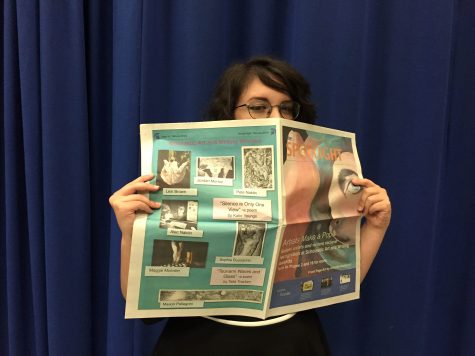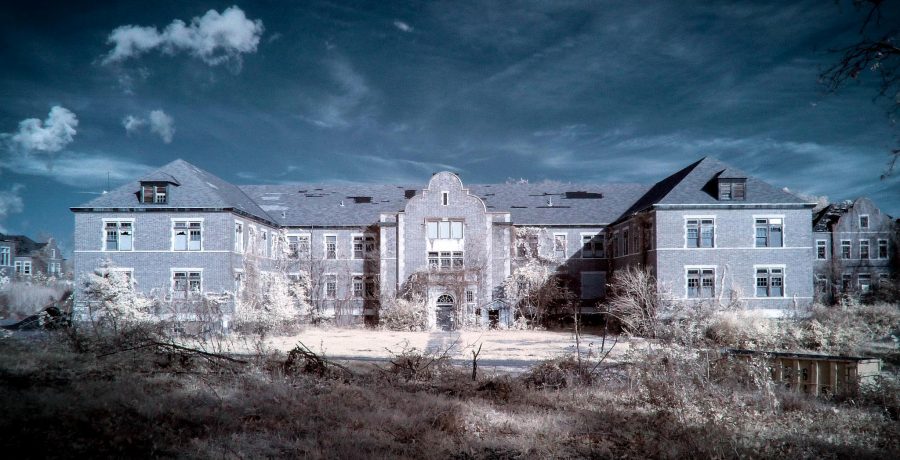There’s Nothing “Scary” About Mental Illness
It is that time of year again: Halloween. The leaves are changing colors, the nights are getting cooler, and thousands of haunted attractions will open their doors to thrill seekers and adrenaline junkies alike. However, there is a terrifying trend in some of these attractions: insane asylum themed haunted houses.
One such attraction is Pennhurst Haunted Attraction, which once functioned as a mental institution. Now, according to its website, “Pennhurst Asylum [is] a hospital themed walk through attraction featuring many items and artifacts that were part of the original State School.”
Scare actors sporting dirty, tattered hospital gowns soaked in blood chase after patrons of the haunted house attraction wielding axes while screaming maniacally. Others stand in the corner of a solitary confinement room, twitching and mumbling to themselves in straightjackets.
Many people believe these Halloween attractions are only fun and games that mean no harm. After all, they are just Halloween attractions. They are obviously fictitious, so what is wrong with them? If people with mental illness are uncomfortable with these attractions, why can’t they just ignore it?
“I personally don’t think [insane asylum attractions] are offensive,” junior Merry Cuvo said. “I don’t think they’re made to hurt that group of people. They’re just made for fun during Halloween.”
Unfortunately for those suffering with mental illness, the answer is not that simple. Unlike the scare actors pretending to be “mentally ill,” they do not get to hang up their costumes and call it a day’s work. When you do not have firsthand knowledge of mental illness, it is hard to understand what someone may feel when they see their own illnesses, or the illness of people they know, mocked in such a public way every Halloween.
Mental illness is not a medical anomaly. It is much more common than you might realize, it and encompasses multiple different mood and behavioral disorders. According to the Center for Disease Control, around 25 percent of adults in the United States have a diagnosis of some form of mental illness. Along with this, the National Alliance of Mental Illness claims that 1 in 5 teens between the ages of 13-18 have a mental health diagnosis. These people are our friends, family, coworkers, neighbors, and people we meet on the streets everyday. You just might not be aware.
“Mental illness is highly common in the general population,” child psychologist Dr. Pamela Schippell said. “Approximately 18 percent of adults and 20 percent of children ages 18 and under have experienced a diagnosable mental disorder just during the past year.”
While the more unethical treatments from the 1950’s and 60’s are no longer in practice, psychiatric wards and hospitals are not an object of a bygone era. They are fully functioning facilities where some people with mental illnesses go to seek treatment. When you are sick, you visit the hospital to receive care, and this is no different for those who visit psychiatric hospitals. Mental illness is not any different from physical illness. It is the same thing as someone seeking treatment for, say, a broken arm. It is incredibly offensive when a legitimate mental health option for those seeking help suddenly transforms into a house of horrors – with mental patients being the sole object of terror.
“I worked at the Allentown State Hospital for three years. I never had direct involvement with the patient care, but I used to go out on the floor and do reports,” former psychiatric hospital employee Jean Roth said. “In general, those committed to the hospital were normal people like you and I, but they had some form of mental [illness]. They always would say good morning to me and were very pleasant to be with. Some even had a great sense of humor.”
If mental illness is so common, and psychiatric hospitals are just hospitals, why do we portray them in such a negative light for Halloween attractions? Why do we not portray those suffering with terminal illness, like cancer or dementia, in the same light? The reason is the social stigma surrounding mental health. Society subconsciously categorizes mentally ill people with negative traits such as violence and instability, the same way Halloween attractions paint them.
“Individuals with mental illness are commonly labelled as a result of their appearance, behavior, treatment, socioeconomic status, and also due to the negative depiction of mental illness so prevalent in the media,” said David Whalen, B.A., for the Canadian Mental Health Association.“Individuals with mental illness are stereotyped as dangerous, unpredictable, and as weak willed.”
Offensive Halloween stereotypes further the stigma of mental illness, closing the opportunity for genuine conversation about the state of mental health in today’s society. When people perceive such negative portrayals of mental illnesses in Halloween attractions, it influences their perspective of those suffering with them. It ultimately leads to the creation of an unjustifiable stereotype, causing individuals with mental illness to experience feelings of ostracization, isolation, and, ultimately, a label of something that does not represent them as a human.
“Particularly around Halloween season, I feel that people without mental illness don’t think twice about the attractions they’re visiting,” senior Nicole Brintzenhoff said, “whereas if you do have a mental illness, seeing all these attractions that demonize you makes you feel that all you’re worth is to scare someone.”
These hurtful generalizations also affect those exhibiting possible symptoms of mental illness. According to the American Foundation for Suicide Prevention, more than 43,000 Americans commit suicide every year, mostly due to underlying, undiagnosed mental illness. Because of the negative stigma, those who truly need treatment are afraid to seek help, for fear that if they admit they have a mental illness, then they will be placed in the category of “crazy, mentally unstable” people.
Halloween is meant to be a fun holiday, but our entertainment should not be at the expense of others. Those who struggle with mental illness are people too, just like you and me. They are not monsters, and most importantly, they are not Halloween characters. Instead of feeding into the stereotype these Halloween attractions present to us, we should educate ourselves on the matter of mental health. In the end, there is truly nothing “scary” about mental illness except our ignorance towards it.

Caitlin Roth, a second-year staff member, has followed an unusual path towards success at the Spotlight. Her first year on staff, as a junior, Caitlin...


